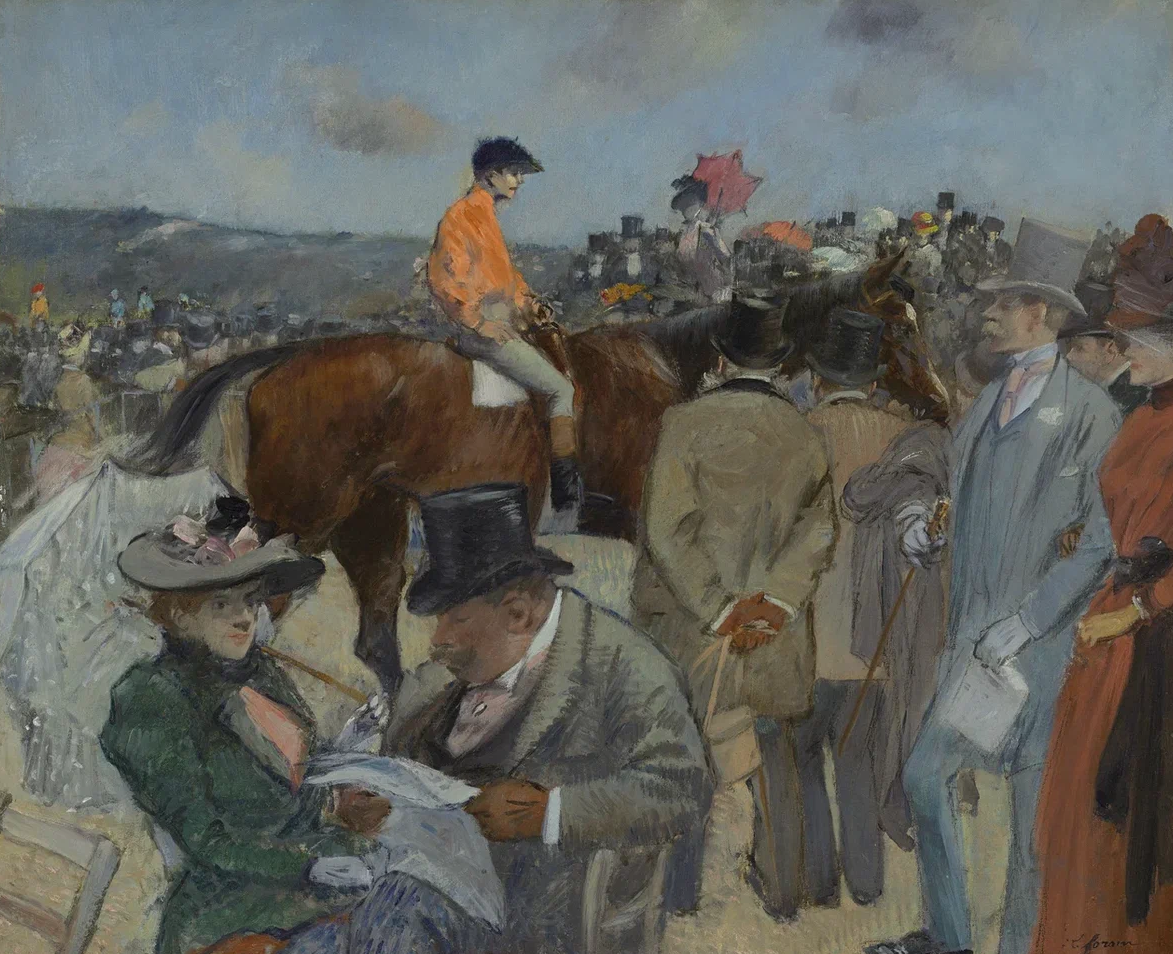Jean-Louis Forain. The Horse Races. Late 1880s.

Jean-Louis Forain's painting, created in the late 1880s, depicts a hippodrome. The jockey, seated on a horse, is surrounded by a crowd of gamblers discussing bets and reviewing racing bulletins.
The history of legal regulation of horse racing in France dates back to the 17th century. The first documented race took place in 1651 as a result of a wager between two nobles during the reign of Louis XIV, the "Sun King." Louis XVI later established a jockey club and, by royal decree, introduced racing regulations, which included requirements for certificates of origin for horses. In 1865, the French Society for Horseback Riding was founded to improve the breeding conditions of thoroughbred racehorses. After the opening of the Longchamp Racecourse in Paris in 1857, horse racing began attracting an ever-growing audience.
In the foreground of the painting depicting a race at this hippodrome is a man holding a racing programme in his hands. Such booklets, which listed the race schedule and information about the horses and riders, were given to spectators and participants. For each registered horse, the programme contained details about the animal, its racing history, owner, trainer, and jockey.
The public's need for such detailed information was driven not only by sporting excitement. Throughout the history of horse racing, competitions have been tied to the financial interests of betting organizers and those who bet on the results. With the introduction of a totalisator, private bets between two acquaintances were replaced by public betting.
Following Great Britain, France developed two betting methods. The bookmaking system offered players fixed-odds bets, with the odds set by the betting organizer— the bookmaker's office. This system is also not without risks, the main of which is the possibility of betting organisers to influence the results of horse races.
Unlike fixed-odds betting at bookmakers, Totalisator betting operates differently. Totalisators were mechanical counters installed at betting booths to record wagers. When calculating payouts, a set percentage of the total betting pool was deducted for the organizer—the racing association—while the remaining money was distributed among those who bet on the winning horse. The first official totalisator in France began operating in 1888.
The 1891 Horse Racing Act established the totalisator as the only legal form of gambling on horse races in France and banned fixed-odds betting. According to this law, a portion of betting revenues had to be allocated to support horse breeding. Additionally, the 1893 Horse Racing and Mutual Betting Act introduced a tax on betting revenues, levied on pari-mutuel operators.
Jean-Louis Forain’s painting showcases the pictorial features of Impressionism—attention to the play of sunlight and the overall sketchy nature of the composition. X-ray imaging reveals the artist’s reworking of the composition. Initially, the artist was more focused on capturing the horse’s movement—the positioning of its legs was adjusted multiple times.